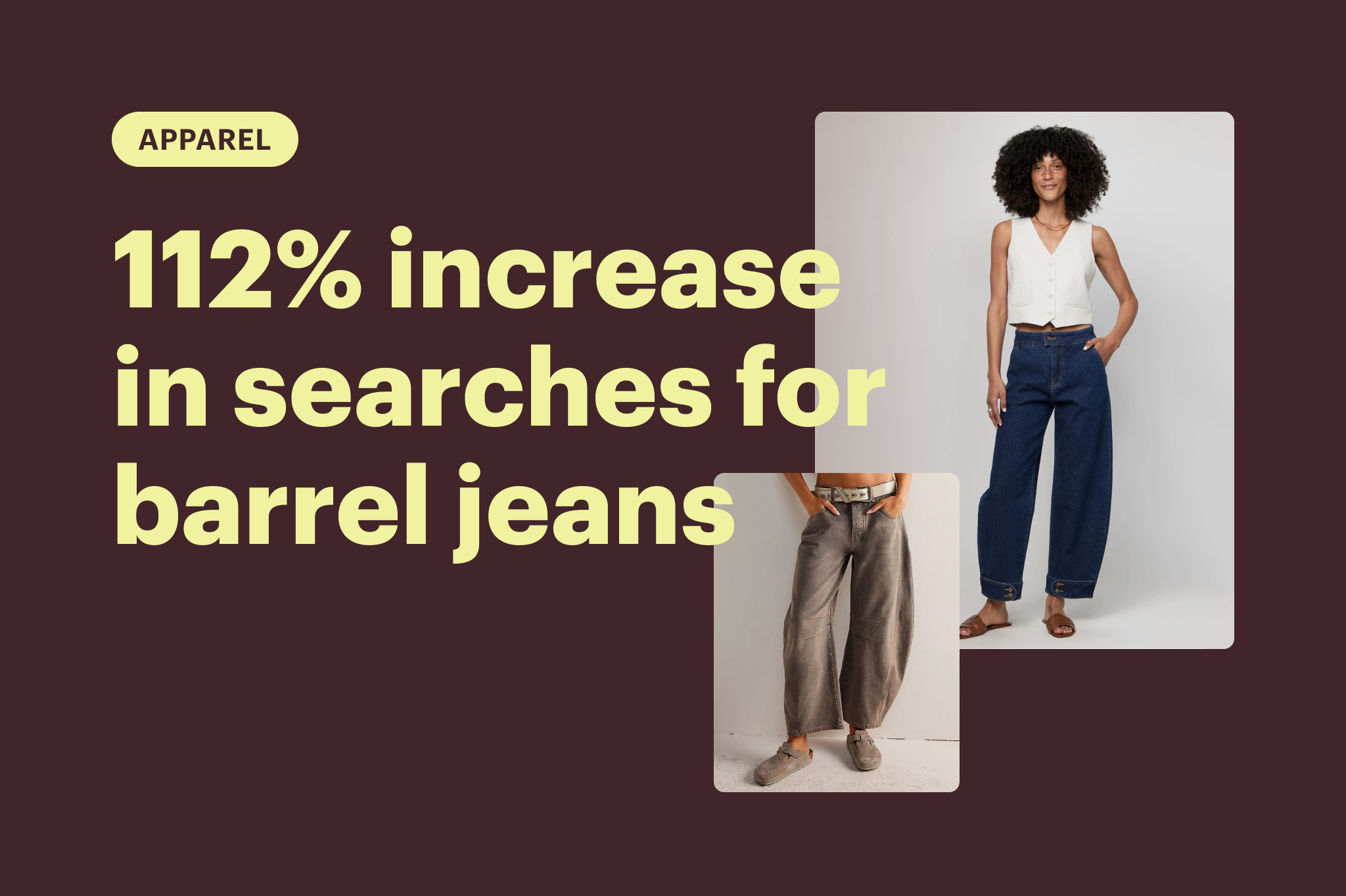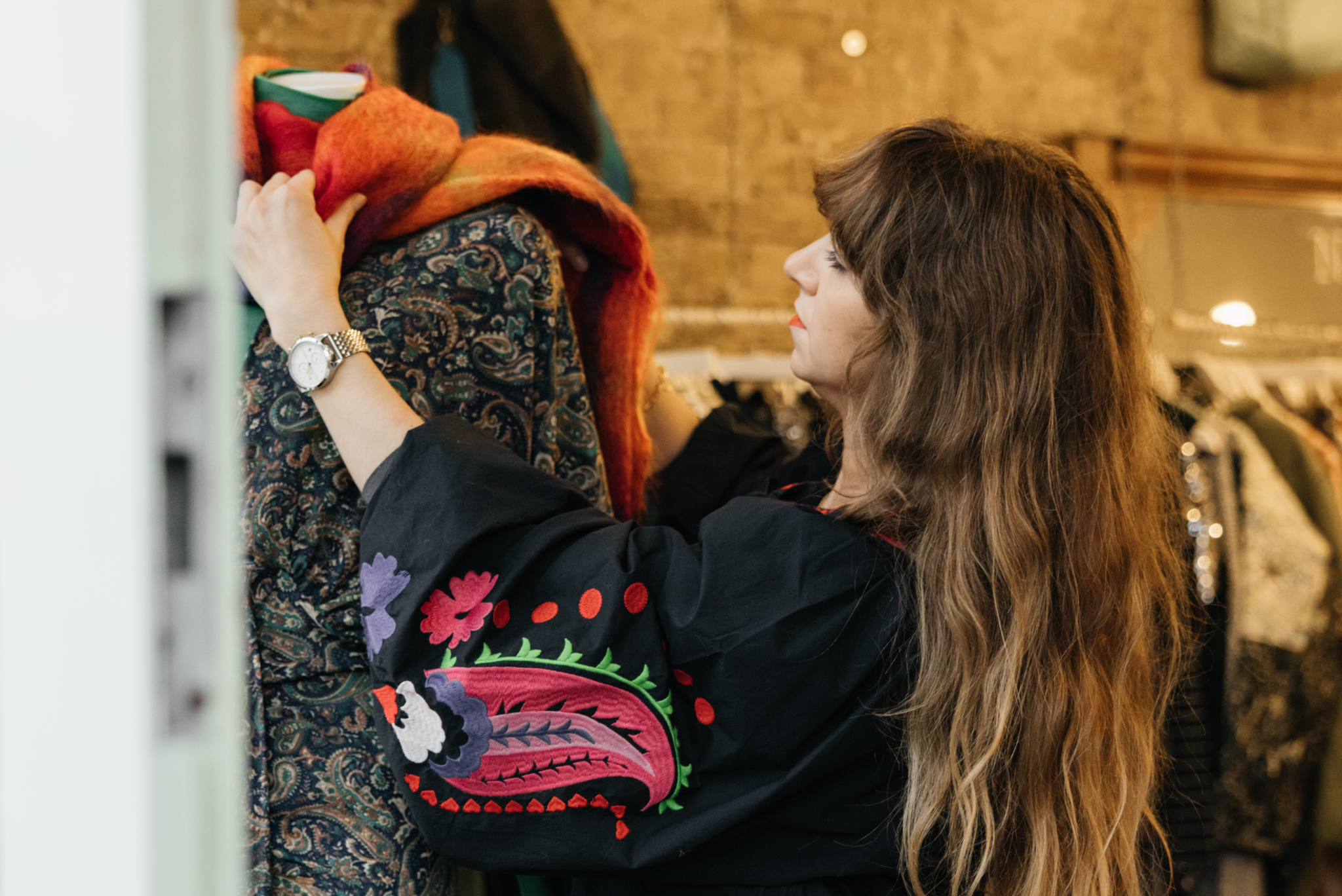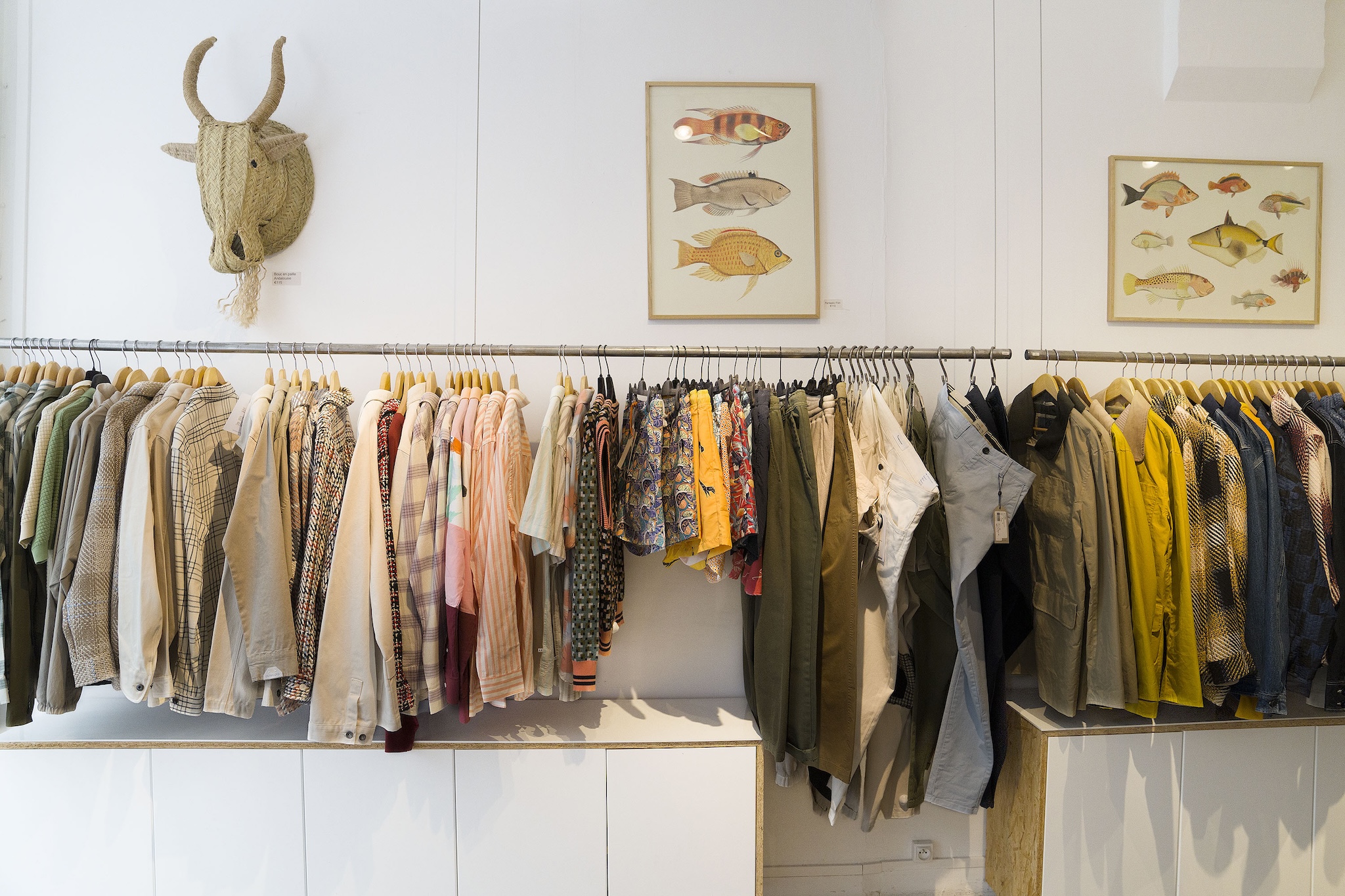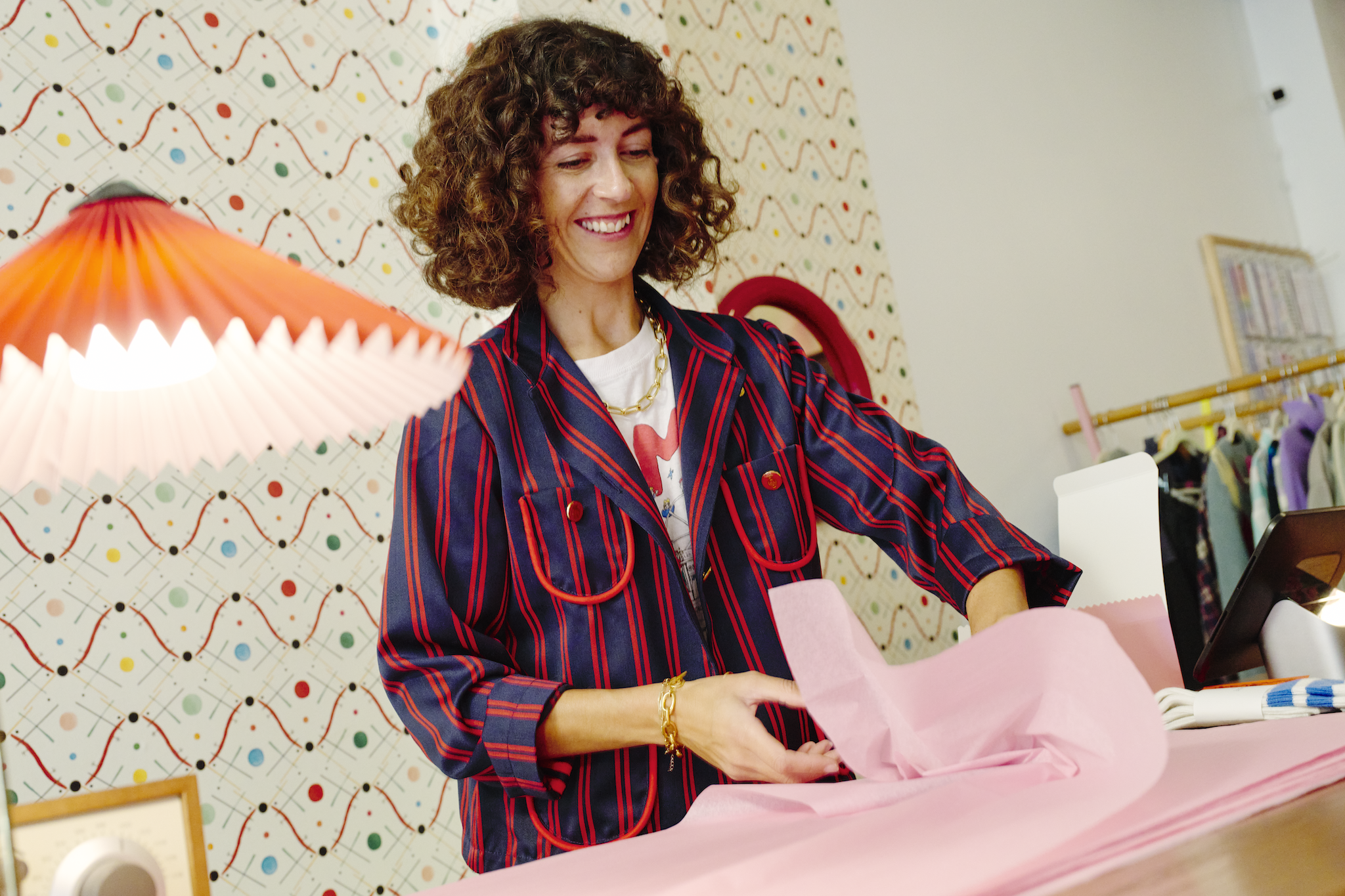
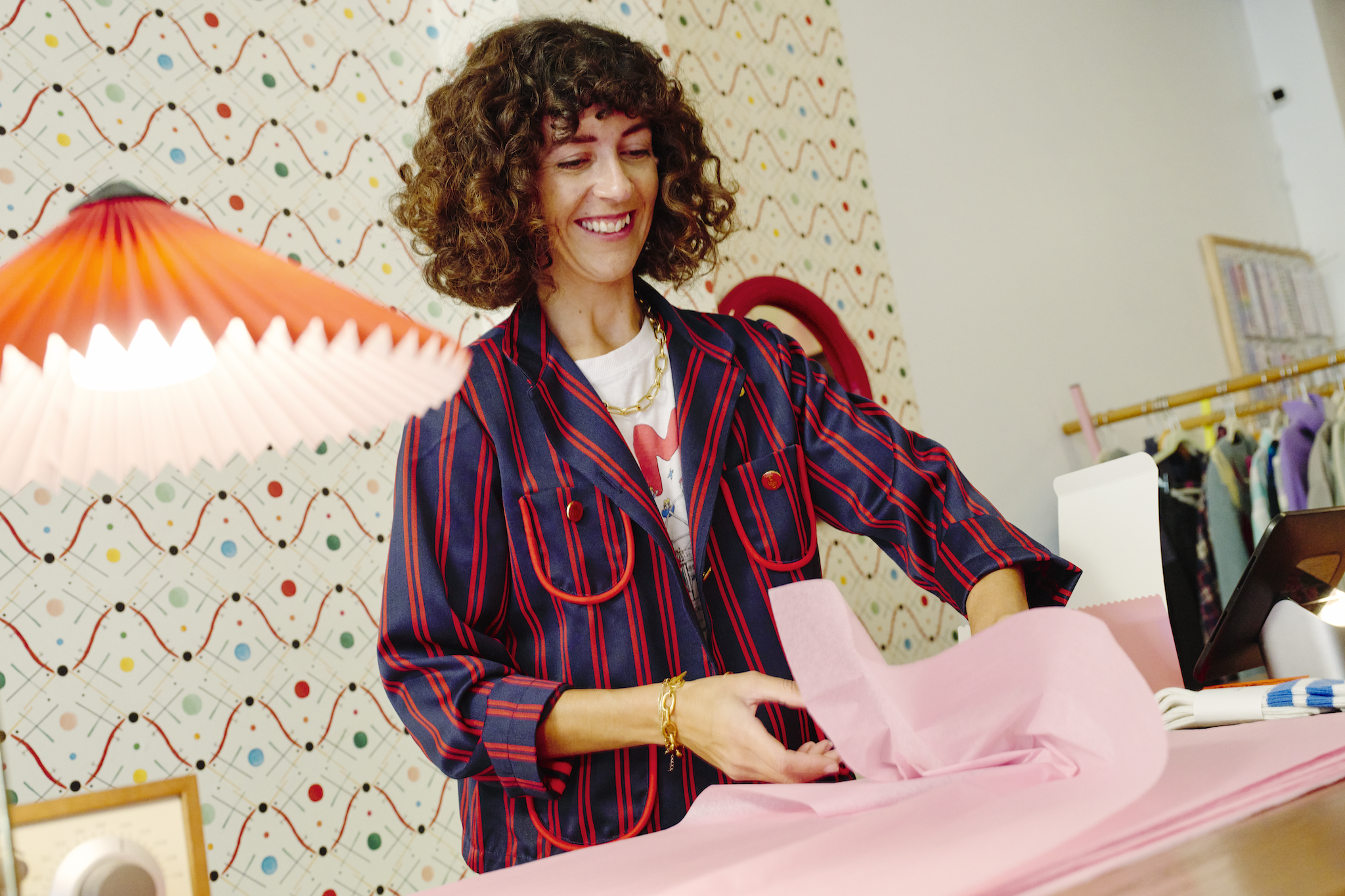
Dreaming of starting your own clothing boutique, but unsure how to begin? There are some nuances about selling fashion that you need to understand before you jump in, so we’ve put together this guide to give you a head start. Whether you’re looking for tips on starting a brick-and-mortar or wondering how to start an online boutique, this guide is a great place to begin your research. It covers the basics of opening a fashion boutique, including how to define your audience and develop your brand, how to create a business plan, where to buy clothes to start a boutique, and more.
What is a boutique?
The word “boutique” is actually just French for “store,” but there are several differences between a fashion boutique and other types of shops. So, what are boutiques? They are typically smaller, independently owned businesses with a specialized selection of fashionable clothing, shoes, and/or accessories. The merchandise tends to be more upscale and/or targeted toward a niche market compared with larger retailers. A boutique can also offer a more personalized experience with one-on-one assistance for customers.
Opening a brick-and-mortar boutique
Like any small business, a lot of thought and effort goes into opening a brick-and-mortar boutique. You’ll need to first consider who your typical customers will be, what kind of merchandise you’re going to sell, and what will set you apart from other boutiques and larger retailers. Then you’ll need to secure the space, sign the lease, and make it inviting and appealing to your customers before holding the grand opening.
First, decide what sets your brick-and-mortar apart
The first thing you need to do is think about whether you’ll specialize in men’s apparel, women’s apparel, children’s clothes, baby clothes, shoes, accessories, or a combination. Depending on the type of product you choose, you’ll also need to think about your niche within that market and look for suppliers specializing in that particular type of merchandise. For example, if you decide to sell luxury apparel, you can’t partner up with the first supplier you find. You need to make sure you work with a trustworthy designer clothing supplier that offers luxury brands your customers will know and admire—and that they likely won’t find at another shop down the street.
Now it’s time to develop your business plan
When you decide to start a business or open a brick-and-mortar store, you need to scout locations with good foot traffic, negotiate your lease, and plan any necessary store renovations. You might consider starting small with a pop-up shop. This way you can see what works before getting a space of your own and designing the layout and decor. Once you do get a space of your own, you’ll want to make sure you nail down your brand’s aesthetic—everything from your window displays to your in-store signage should reflect your brand.
Many of the steps we outline in these guides to opening a new retail store apply specifically to brick-and-mortar clothing boutiques, such as finding a retail location and renovating your store, and how to get funding and licenses. You may also need a basic business operation license, sales tax license, sellers/resellers permit, building permit, certificate of occupancy, alarm permit, home occupation permit, and/or apparel registration certificate. Retail stores also typically need to get insurance for property damage and personal injury. Once you have your location secured and all the paperwork out of the way, then you can start planning the grand opening and decorating your shop.
As you’ll see in the next section, there are some special considerations that are unique to opening an online boutique.
Opening an online boutique
If you’ve decided to open an online boutique—either as a standalone business or in addition to a brick-and-mortar business—you’ll have some added considerations to make. Online boutiques come with certain advantages, like lower start-up costs, but you still need to cover a range of expenses and put effort into your website, inventory, shipping methods, brand development, and marketing.
Online boutiques need a niche of their own
Just like brick-and-mortar boutiques, online fashion sellers need to appeal to a certain segment of the consumer market. It’s especially important to build a website that is user-friendly, attractive, and shows your merchandise and your brand values in the best possible light. Whether you’re specializing in baby clothes, accessories and jewelry, or any other type of fashion merchandise, you’ll need to cut through the noise of competitors.
Let’s look at some examples of successful online boutiques for inspiration. Urbanheer sells luxurious fashions for men, women, and children as well as furniture and bedding. They offer well-known luxury brands like Jimmy Choo, Burberry, and Versace alongside products from independent designer brands like Amourique, Avec Les Filles, and Yagya. Other online boutiques are even more specialized. Apparel Garden, for example, specializes in quality women’s clothes that make you “feel great, comfortable, and confident” regardless of your size or body style. They sell a curated range of apparel from women’s brands like Tulip Clothing and La Maison des Fibres Naturelles with a focus on natural fabrics and cozy styles.
So, to set yourself up for success, define your niche market. Why should your target customers keep coming back to buy more? Your answers should help guide you as you take the next steps.
Plan and budget for your online boutique
Before you can start selling online, you’ll need to get a tax ID and find out what licenses and permits you’ll need to open, just as you would if you were opening a brick-and-mortar. Unlike a brick-and-mortar store, you’ll also need to consider shipping methods that get merchandise to your customers quickly and at a rate that works for everyone. As mentioned in the previous section, Faire offers a series of guides on all these topics and more to help you get started and avoid common pitfalls.
You’ll also need to figure out how to make the most of your budget as you get your online boutique off the ground. Low start-up costs are one of the biggest advantages of doing business online, which means you can get started even if you’re working with a shoestring budget. It just requires a more strategic approach to how you plan and buy your inventory. One way to keep your inventory high even when your budget is low is to utilize Faire’s 60-day payment terms so you can stock your online shop now, start making sales, and pay your wholesale suppliers up to 60 days later (for eligible retailers).
So, how much does it cost to start an online boutique? In all honesty, you could build out a website, order a beginning inventory, and start promoting your online boutique via email and social media for less than $1,000. And if you’re wondering how to start an online boutique with no money, you might be able to make it happen if you have web design and marketing skills, you qualify for extended payment terms, and you’re able to sell a substantial amount of inventory in the first 60 days before you’re scheduled to pay your wholesale suppliers. But it will require being not only your own boss but also your only employee.
How to develop your brand identity
Developing a consistent and easily recognizable identity that feels aspirational to your target audience is key. Your branding should tell the story of your business while making your mission and niche clear. It’s important to develop the following aspects of your brand as you build your boutique business:
- Design: Your brand identity should be aesthetically consistent and polished. Consider having a logo professionally designed since it can make a powerful first impression. The designs for your website, social media, and physical space (if you have one), including window displays, in-store displays, shopping bags, and more, should be consistent.
- Copy: It’s important to maintain a clear and defined tone and voice in your mission or “about us” statement, product descriptions, marketing content, emails, and other text-based communication. Consider what your brand’s values are, what it stands for, and what feelings you’d like to evoke in your customers.
- Web presence: Your web presence starts with a professional-looking website including high-quality images and clear navigation. Even if you’re primarily doing business in person, you’ll likely still want to include e-commerce capabilities on your website, especially if you plan to accept online orders for in-store pickup or shipping.
- Marketing: Start with a social media presence, including Instagram and other platforms like TikTok and Facebook. You can share photos and videos of your newest fashion offerings, engage with fashion lovers online, and share information and news about your store. You might consider paid ads that promote your brand and link to your website. Email marketing can be a powerful tool as well. By sending out promotions and news to your subscribers, you can develop customer loyalty and increase sales.
How to keep your boutique stocked
Now for the fun stuff! Picking the clothing or accessories you’ll sell is perhaps the most creative part of running a boutique—and it sets the tone for your entire business. Make sure you carefully develop and maintain the look and feel of your boutique brand with items that make sense together. You can make a mood board, window-shop at stores you admire, or just keep your eyes open while walking around a stylish part of town. Faire also makes it easy to find inspiration and source new products from more than 100,000 brands, so you can always find something new.
As you stock your shop, it may help to learn more about fashion merchandising, i.e., the art and science of buying, displaying, and visually promoting fashion merchandise. With some experimentation, you’ll learn how best to showcase your items to entice shoppers and keep them coming back. Just keep in mind that you might not want to stock only trendy or seasonal clothing, even if you tend to focus on more contemporary styles.
Once you know what kind of products you want to offer, you’ll need to land on a reasonable price point for your merchandise that will ensure you turn a profit. Some wholesale products come with a suggested retail price, or you can just go by the standard markup method of multiplying the wholesale price by 2 or 2.5. This article about stocking your new retail store can give you a good sense of how to plan your inventory and fill your shelves while keeping your budget in mind.
Many boutique businesses source their products on a wholesale marketplace like Faire, but you may also want to sell products that you make yourself. It’s your business, so it’s truly up to you what you sell, which is part of what makes running a boutique so great.

